The 10 Biggest Data Center News Stories Of 2019
From new Data Center as-a-service offerings by Dell Technologies and Lenovo to the massive M&A spree, CRN breaks down the biggest data centers stories of 2019 that shaped the market.
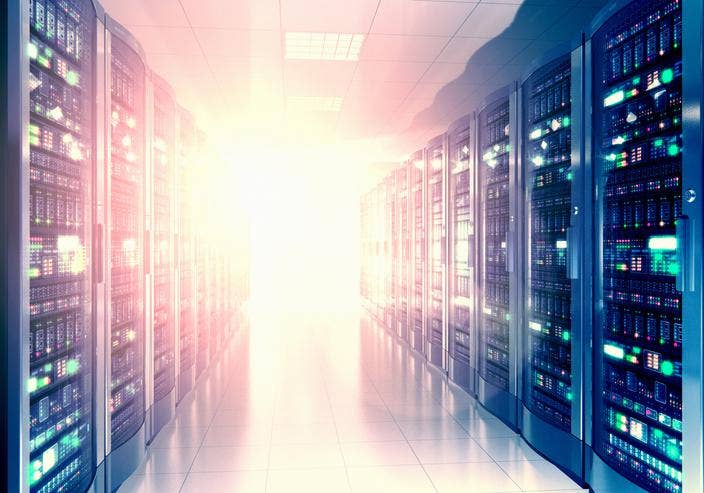
Data Centers
The data center market disrupted itself in 2019, giving the world a glimpse into the future of how data centers will be constructed and how businesses will buy and consume IT products.
The largest infrastructure providers in the globe all acknowledged this year that data center customers want to buy, consume and manage technology as-a-service with giants like Dell Technologies and Lenovo launching brand new consumption-based, pay-per-use data center offerings.
The world also witnessed the rise of hyperscale cloud data center operators that are overtaking the market as AWS, Google and Microsoft spent tens-of-billions in 2019 in building and equipping massive facilities, aided in many cases by new lucrative tax incentives being implemented by governments throughout the globe.
CRN breaks down the top ten biggest data center news stories and trends of 2019.
Get more of CRN's 2019 tech year in review.
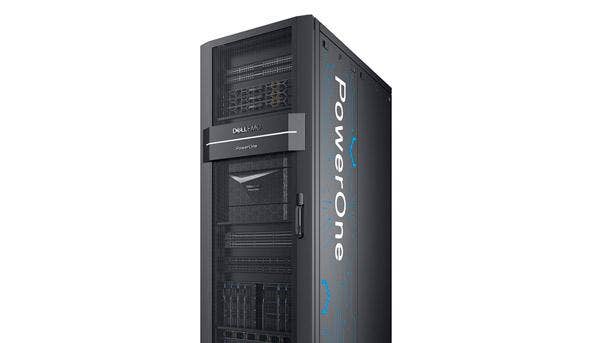
10. Autonomous Data Centers Becoming A Reality
The data center received a swath of new innovations such as artificial intelligence and intelligent automation this year in a move to make autonomous data centers a reality. Leading the charge in 2019 were the two largest data center infrastructure providers in the world, Dell Technologies and Hewlett Packard Enterprise.
Dell Technologies launched its new PowerOne autonomous infrastructure this year that combines all of Dell EMC’s flagship infrastructure products together with VMware vSphere in a single architecture wrapped in a new built-in, outcome oriented automation engine. The special sauce is PowerOne’s built-in intelligent automation engine, dubbed PowerOne Controller, which can automate thousands of tasks. The solution uses a Kubernetes microservices architecture and Ansible workflows to automate the configuration, provision and lifecycle management of the components.
In June, HPE unveiled Primera, a revolutionary storage platform combined with the company’s innovative artificial intelligence and predictive analytics technology InfoSight. HPE Primera enables businesses to predict and prevent issues, accelerate application performance, provision storage within seconds, and has a built-in OS that decouples data services so they can be deployed, upgraded and restarted independently.

9. Lenovo Enters Data Center As-A-Service Market
Lenovo changed the way it sells data center solutions in 2019 with the launch of its new, consumption-based infrastructure as-a-service offering Lenovo TruScale Infrastructure Services. TruScale is a pay-per-use subscription offering for Lenovo data center products based on electrical consumption which allows customers to use and pay for on-premise data center hardware and services without having to purchase the equipment. Customers never take capital ownership of the hardware or other IT assets with no minimum capacity requirement for TruScale.
With Lenovo TruScale, channel partners can sell all of Lenovo’s data center solutions – including its ThinkAgile software-defined infrastructure and ThinkSystem server portfolios -- on a pay per use model which includes hardware installation, deployment, management, maintenance and removal. New Lenovo innovation included both a customer and partner portal that provides constant visibility through a single pane of glass into a client’s data center consumption.
This year proved to be a major turning point for Lenovo in terms of shifting towards an opex sales motion. The company told CRN that it will eventually make every single asset in Lenovo’s portfolio – from data center to the edge to the Internet of Things – available to sell as a service.
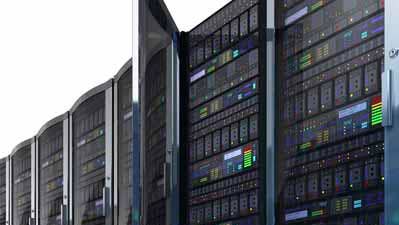
8. A Staggering Data Center M&A Pace In 2019
As many enterprises shift workloads to the cloud and seek colocation providers to house their IT infrastructure, the amount of data center acquisitions made in 2019 was staggering. Although not official yet, 2019 will likely turn out to be a record setting year for data center M&A.
Rather than having to focus on running and managing their own data center, some enterprises are selling their facilities to colocation providers who are buying them in an effort to grow their global footprint to better serve both hyperscale cloud providers and enterprises. In the first half of 2019 alone, 52 data center acquisitions closed, which exceeded the total amount closed in the whole year of 2016. Dozens of more data center deals have closed over the past several months. Digital Reality and Equinix, which will later be discussed on this list, are leading the M&A charge.
Private equity and investors are also driving the M&A tear in 2019. For example, wholesale data center colocation startup Stack Infrastructure raised over $1 billion in capital financing, while investment firm Colony Capital acquired Digital Bridge Holdings, owner of 39 data centers globally. Many investors believe data centers will be a critical asset in the new data-driven economy.

7. Oracle Makes Biggest Data Center Investment In Years
After watching from the sidelines while AWS, Google and Microsoft spent billions on new data centers, Oracle planted its data center stake in the ground this year. At OpenWorld in September, Oracle unveiled plans to open a new data center region every 23 days on average over 15 months in a bold investment strategy to create 20 additional facilities across the globe.
The Redwood City, Calif.-based software and cloud giant will launch 20 new Oracle Cloud sites by the end of 2020, including 17 commercial and three government centers. The major investment will boost Oracle cloud availability regions from 16 to 36 in a move to better compete against Microsoft Azure, Google Cloud Platform and AWS. To support this data center expansion, Oracle plans to hire 2,000 new employees to build out and drive cloud adoption.
Oracle Cloud will build new data centers in California, Chile, Montreal, Melbourne, Amsterdam, Singapore, Israel, South Africa, Belo Horizonte in Brazil, Osaka in Japan, Hyderabad in India, Chuncheon in South Korea, Newport in Wales, as well as two in Saudi Arabia and two in the United Arab Emirates. The company also intends to open two regions for the U.K. government and one for the government of Israel.

6. New Tax Incentives Fueling Data Center Construction
Government entities across the globe implemented various data center tax incentives this to try to sway companies to build new facilities in their region with hopes of bringing new jobs and opportunities to the area. With the rise of cloud and growing data demands, governments are fighting to bring data centers to their region.
Illinois lawmakers, for example, passed a data center tax incentive that exempts qualifying data center providers from state and local sales tax on the equipment inside the facilities over the course of 10 years. Facebook, in another example, is currently constructing a hyperscale data center in Utah where it will receive roughly $150 million in property tax incentives from the region.
Amazon, in particular, has aggressively been chasing data center tax incentives. This year, local authorities in Oregon agreed to give Amazon a total exemption from property taxes for 15 years in order to sway the company to build a new data center campus. Amazon is now preparing to start construction on its seventh data center in northeastern Oregon. Overseas, the Argentine National Congress passed the Knowledge Economy Law to promote digital economy investments with the promise of generous tax incentives for technology firms. Amazon unveiled plans this year to invest $800 million in a new data center in Argentina, which includes tax incentives such as reduction in Argentina’s income tax rate to 15 percent from 35 percent as well as cheaper energy and labor costs.
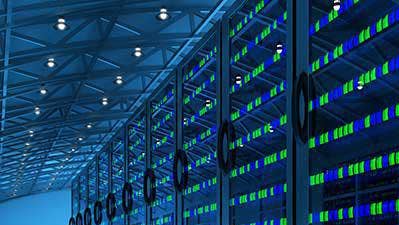
5. Data Center Colocation Titans Equinix And Digital Realty Fight For Leadership
Leading the data center’s massive M&A charge in 2019 were colocation giant’s Equinix and Digital Realty. The two companies both entered new markets overseas this year while at the same time doubling down on building hyperscale data centers to customers across the globe.
Equinix embarked on a $1 billion venture this year to develop hyperscale data centers throughout Europe, while at the same time entering the Mexico data center market through its $175 million acquisition of Axtel SAB data centers. To scale to the needs of hyperscalers, the Redwood Shores, Calif.-based company created xScale data centers to provide access to Equinix’s suite of interconnection and edge services that tie into hyperscale companies such as AWS, Microsoft and Google’s existing access points at Equinix.
Digital Realty expanded its data center footprint this year in both Asia and Europe. In October, in one of the largest data center acquisitions in years, Digital Realty unveiled its planned $8.4 billion purchase of Interxion. Interxion’s European business consists of 53 facilities in 22 European counties and 13 metro areas including Paris, Frankfurt and Amsterdam, making it one of the most valuable data center providers in Europe.
Once the acquisition of Interxion is completed, Digital Realty claims it will be the largest colocation data provider in the world. However, Equinix CEO Charles Meyers disagreed. “I think it’s a bit of a stretch to say that the combination really meaningfully closes the gap in terms of trying to replicate the scope, scale and value of [Equinix’,” he said during the company’s earnings call in October.
This year was huge for both Equinix and Digital Realty as both expanded their data center footprint and launched innovations for the future.
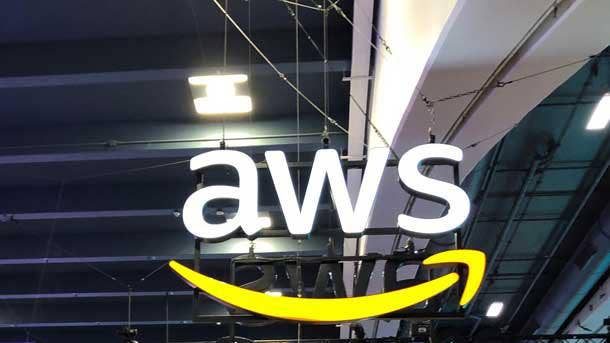
4. Amazon Officially Enters The Data Center Hardware Market
Amazon Web Services sent shockwaves through the data center industry in late 2018 by unveiling AWS Outposts, an on-premise integrated hardware stack that can run native AWS or VMware environments that seamlessly connect to Amazon’s public cloud. However, it took the public cloud giant more than a year before AWS Outposts became generally available in the market this December.
Outposts now officially offers AWS EC2 instances and EBS block storage as well as two hosted container services, ECS and EKS, with plans to add S3 storage in the first half of 2020. The solution comes in two variants: AWS Native for customers that want to use AWS APIs and control plane; and for those who want to use a VMware control plane, possibly in conjunction with VMware Cloud on AWS.
Cisco is joining AWS in its data center march by making Cisco’s Application Centric Infrastructure (ACI) technology for cloud environments available on AWS Outposts. The networking giant also plans to integrate AppDynamics into Outposts. Amazon also unveiled a new service, AWS Local Zones, that is rooted in Outposts technology.
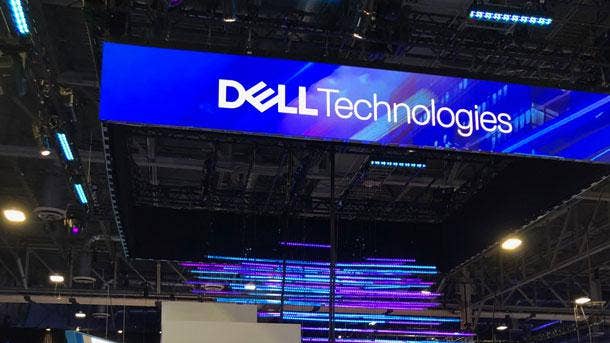
3. The Dell Technologies Cloud Unleashed
In arguably its biggest product launch of the year, Dell Technologies unleashed the Dell Technologies Cloud, which provides an all-in-one, data center as-a-service architecture. The new consumption-based Dell Technologies Cloud is made up of two similar offerings with the same foundation of VMware Cloud Foundation integrated with hyperconverged infrastructure VxRail or a mix of other Dell EMC hardware.
Dell Technologies Cloud began shipping this year with “off the charts” demands. The move showed that Dell was more than ready to enter the data center as-a-service race by allows customers to buy Dell Technologies Cloud in a variety of options including Opex, lease, consume as a service or pay per use.
In November, the Round Rock, Texas-based infrastructure giant doubled down on its as-a-service strategy by launching Dell Technologies On Demand, which allows its massive channel partner community to sell nearly all of Dell EMC and VMware solutions – from PowerEdge servers and the Dell Technologies Cloud – in a variety of as-a-service and consumption options. Dell Technologies CEO Michael Dell recently told CRN that his company will be “investing heavily” in the Dell Technologies Cloud in 2020.

2. Hyperscale Data Centers Become The New Norm
One of the biggest transformations in 2019 revolves around how the majority of new data centers are now being built. While a traditional data center typically supports hundreds of physical servers and other IT hardware along with thousands of virtual machines, most of the new data centers built this year were hyperscale data centers which house tens of thousands of servers and hardware alongside millions of virtual machines.
Hyperscale data centers have been growing at a historic rate over the past six years, with the number of hyperscale data centers tripling since 2013. At the end of third the third quarter of 2019, a whopping 504 of these large data centers were being operated with more than 150 new hyperscale centers on the way.
Amazon, Apple, Google, Facebook and Microsoft led the charge in terms of building new data centers in 2019, all of which are building hyperscale facilities. Hyperscale capex data center spending is on pace to break the record in 2019, where in the third quarter alone, saw spending exceeding $31 billion, up 8 percent year over year.
Hyperscale operators accounted for 33 percent of all spending on data center hardware and software in the first three quarters of 2019, up from 26 percent in 2017 and an increase from 15 percent in 2015, according to Synergy Research Group. The pace of spending on hyperscale data centers isn’t expected to slow down in 2020.

1. Data Center As-A-Service Hits Mainstream; Channel Partners Follow Suit
Over the past several years, the cloud has disrupted many IT industries by changing the way that businesses want to buy and consume technology. The biggest data center news story of 2019 was that the largest data center infrastructure providers in the world, such as Dell Technologies and Lenovo, launched new data center as-a-service offerings to provide a more cloud-like sales model for customers while at the same time incentivizing channel partners to follow along. Selling in an opex sales motion with a heavy focus on providing value-added services -- compared to the traditional transactional approach – is driving channel partner profitability.
“You have to move out from that transactional approach, where it is largely commodity-based and a very low margin, to now where they start to layer in the services as part of it -- it really changes that dynamic of the margin that partners make,” said Gary Simms, vice president, Head of Americas Channel Programs & Enablement for HP Inc., in CRN’s Everything-As-A-Service Roundtable discussion this year. “We're trying to really ignite and influence that within the partner community that it's a game-changer in terms of your view on what you make and the control that now gives you over a customer.”
Vendors like Cisco, Dell and Hewlett Packard Enterprise expect as-a-service to eventually change the way businesses buy, consume and manage IT infrastructure in the data center. Although some vendors only this year dove head-first into the data center as-a-service market, HPE’s mature GreenLake pay per use offering perhaps gives a glimpse into the future. In 2019, HPE GreenLake channel sales pipeline surpassed the $850 million mark. For the company’s full fiscal year, HPE GreenLake channel sales were up a whopping 231 percent. This year, the industry leading infrastructure providers proved their willingness to change the way they sell solutions in the data center.